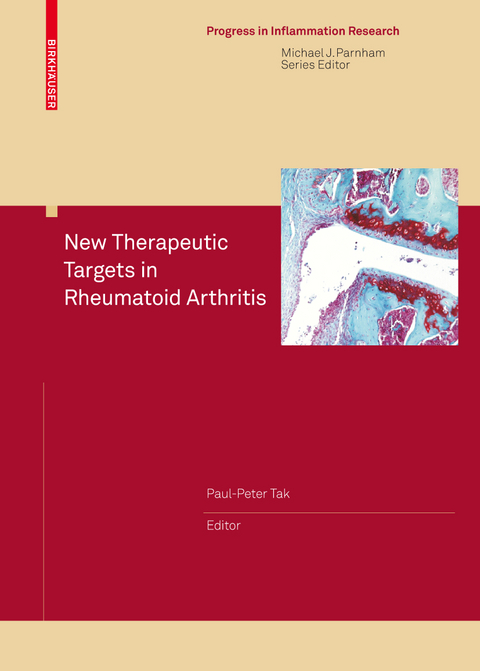New Therapeutic Targets in Rheumatoid Arthritis
Seiten
2009
|
2009
Springer Basel (Verlag)
978-3-7643-8237-7 (ISBN)
Springer Basel (Verlag)
978-3-7643-8237-7 (ISBN)
During the past decades important breakthroughs have been made in the treatment of rheumatoid arthritis (RA). First, the implementation of low-dose methotrexate and other conventional disease-modifying anti-rheumatic drugs was introduced as an effective treatment. Second, it was recognized that early immunomodu- tory treatment is crucial for controlling the disease and its long-term destructive effects more effectively. Parallel advances in research on the pathogenesis of RA and cytokine biology converged in identifying tumor necrosis factor (TNF) as a key factor in inflammation and matrix destruction. The concept arose that elevated TNF concentrations at the sites of inflammation were driving disease pathology, and the removal of excess TNF from sites of inflammation became a therapeutic goal. Clearly, TNF blockade has revolutionized the treatment of RA, as well as other immune-mediated inflammatory diseases. Anti-TNF treatment results in cli- cal benefit in a significant proportion of the patients, and it has provided proof of concept for the principle of targeted therapy. Despite the impressive disease-modifying effects of the TNF blockers, not all patients respond, and patients who exhibited an initial response may lose response due to the development of anti-drug antibodies (human anti-chimeric antibodies and human anti-human antibodies, respectively) and perhaps as a result of escape mechanisms related to the disease process. In fact, the majority of the patients still have disease activity in at least one or two actively inflamed joints.
B cell targets in rheumatoid arthritis.- Co-stimulatory pathways in the therapy of rheumatoid arthritis.- Immunobiology of IL-6 - Tocilizumab (humanised anti-IL-6 receptor antibody) for the treatment of rheumatoid arthritis.- Role of IL-1 in erosive arthritis, lessons from animal models.- Interleukin-15.- IL-17 and Th17 cells, key players in arthritis.- Role of IL-18 in inflammatory diseases.- Chemokines and chemokine receptors.- Signaling pathways in rheumatoid arthritis.- Targeting oncostatin M in the treatment of rheumatoid arthritis.- Targeting the epigenetic modifications of synovial cells.- Perspectives in targeted therapy.
| Erscheint lt. Verlag | 13.3.2009 |
|---|---|
| Reihe/Serie | Progress in Inflammation Research |
| Zusatzinfo | XII, 228 p. |
| Verlagsort | Basel |
| Sprache | englisch |
| Maße | 170 x 244 mm |
| Gewicht | 696 g |
| Themenwelt | Medizinische Fachgebiete ► Innere Medizin ► Rheumatologie |
| Schlagworte | Antibody • Arthritis • Arthritis / Gelenkentzündung • Cell • Chemokine • clinical trial • Diseases • Drug • Drug Target • Hardcover, Softcover / Medizin/Klinische Fächer • HC/Medizin/Klinische Fächer • Immunobiology • immunology • inflammation • Interleukine • Research • Rheuma • Rheumatoid Arthritis • rheumatology • TNF |
| ISBN-10 | 3-7643-8237-6 / 3764382376 |
| ISBN-13 | 978-3-7643-8237-7 / 9783764382377 |
| Zustand | Neuware |
| Informationen gemäß Produktsicherheitsverordnung (GPSR) | |
| Haben Sie eine Frage zum Produkt? |
Mehr entdecken
aus dem Bereich
aus dem Bereich
Information für Erkrankte, Angehörige und Betreuende
Buch | Softcover (2023)
Springer (Verlag)
CHF 32,15
Das Wichtigste für Klinik und Praxis
Buch | Softcover (2022)
Urban & Fischer in Elsevier (Verlag)
CHF 49,90




